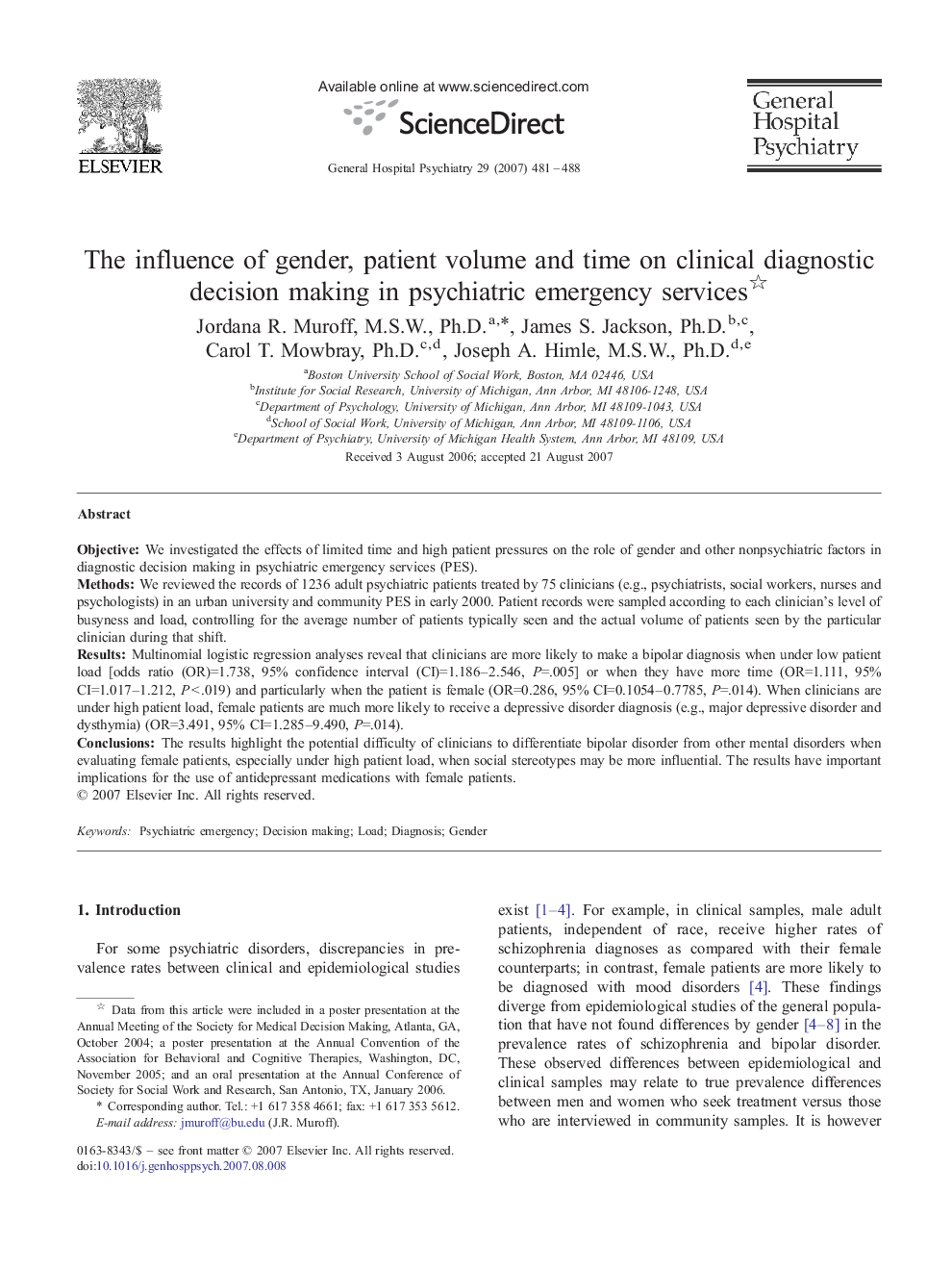| Article ID | Journal | Published Year | Pages | File Type |
|---|---|---|---|---|
| 3238379 | General Hospital Psychiatry | 2007 | 8 Pages |
ObjectiveWe investigated the effects of limited time and high patient pressures on the role of gender and other nonpsychiatric factors in diagnostic decision making in psychiatric emergency services (PES).MethodsWe reviewed the records of 1236 adult psychiatric patients treated by 75 clinicians (e.g., psychiatrists, social workers, nurses and psychologists) in an urban university and community PES in early 2000. Patient records were sampled according to each clinician's level of busyness and load, controlling for the average number of patients typically seen and the actual volume of patients seen by the particular clinician during that shift.ResultsMultinomial logistic regression analyses reveal that clinicians are more likely to make a bipolar diagnosis when under low patient load [odds ratio (OR)=1.738, 95% confidence interval (CI)=1.186–2.546, P=.005] or when they have more time (OR=1.111, 95% CI=1.017–1.212, P<.019) and particularly when the patient is female (OR=0.286, 95% CI=0.1054–0.7785, P=.014). When clinicians are under high patient load, female patients are much more likely to receive a depressive disorder diagnosis (e.g., major depressive disorder and dysthymia) (OR=3.491, 95% CI=1.285–9.490, P=.014).ConclusionsThe results highlight the potential difficulty of clinicians to differentiate bipolar disorder from other mental disorders when evaluating female patients, especially under high patient load, when social stereotypes may be more influential. The results have important implications for the use of antidepressant medications with female patients.
